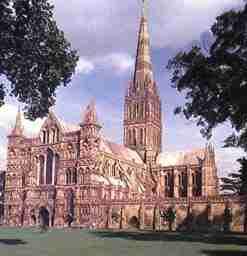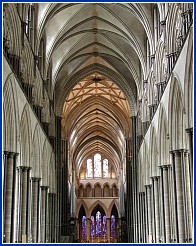I don't know that I would call Chartres Romanesque. The facade dates from before 1194, the date in which there was a fire that destroyed all but the facade and one bay of the cathedral. Since the Gothic style was born in 1144, I think the facade is still Gothic, but definitely Early Gothic. The arches are only barely pointed, and the facade is not nearly as busy as later cathedrals (like Amiens or Reims). The arches are also "recessed" into the wall, rathe than projecting out. But because of the rose window (even heavy as it is with stone) and the pointed arches, it is definitely early Gothic. But I don't know about any previous church on the site. It does dominate the sky line, but so did any of the cathedrals of the time. They showed how important God was to the town (vs. what our commercial skyscrapers say about what is important to us nowadays.)

Reims Cathedral, a busy High Gothic facade with stained glass at the tympanums instead of sculpture. Very lovely.
I haven't ever been up in Notre Dame's towers. Interesting point about the use of wood. They were originally to have pointed caps on them but, as was often true, they ran out of money.
It is true that they took the stained glass out of the churches for both world wars. Chartres is the only cathedral with all (or most) of its original stained glass.
There are actually three different styles of English Gothic: Early, Decorated and Perpendicular. English Gothic is more horizontal and, in its later styles, has some of the wildest vaulting I have ever seen.


Salisbury Cathedral, Early English Gothic. Note the more horizontal emphasis, inside and out.

Lincoln Cathedral, still Early English but with "crazy vaults"


Ely Cathedral, Decorated English style, with an awesome octagonal tower.

Chapel of Henry VII, Westminster Abbey, 16th century. The Gothic style lasted longer in England than anywhere else. This is now the perpendicular style; note the "stalactite" vaulting.